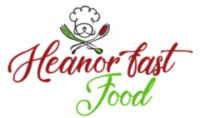
Eastern European cuisine is a combination of hearty and filling peasant dishes, with large bowls of steaming dumplings, beet soup with its colorful pose, and sauerkraut that perfumes the air. There are also elegant gourmet offerings such as fancy tortes and precious tiny appetizers.
But whether it is a complex dish or a comfort food, the ingredients used are always simple that you can easily get through Eastern European Grocery & Food Market Delivery Los Angeles – Bakkal. What really sets European dishes apart are the sauces used and the method of preparation.
Geography’s Influence on Eastern European Cuisine
Eastern European cuisine is forged by the region’s natural resources that have influenced many recipes in the area.
Seafood and fish are abundant from the Black to the Baltic Sea. Native juniper wood’s unique flavor lends itself to smoking sausages and hams. The abundance of cream cheese and sour cream are also the natural byproducts of the flourishing dairy industry.
There are also plentiful mushrooms in most of the forests that serve as the home to the wild game that is also used in many dishes such as venison goulash and hunter’s stew.
The fertile farmlands are the source of grains used to prepare numerous varieties of dumplings, noodles, vodka, and bread. These are also used to serve as feed for lambs, ducks, and pigs that are used in various recipes.
Of course, there are also home gardens that yield up harvests of dill, hot and sweet peppers, kohlrabi, cucumbers, and potatoes.
The Different Cultural Influences
There is also a significant crossover of numerous regional influences that it is sometimes impossible to tell which dishes originated in which countries. But one thing is for sure, there are numerous variations on a certain theme, which is the case of stuffed cabbage as well as kolaczki cookies that are also spelled as kolacky, kolache, as well as many other ways.
Things are made even more interesting by the fact that the nobility’s marriages many centuries ago paved way in bringing the flavors of German, Jewish, Russian, Turkish, French, and Italian foods to combine with those of Eastern Europe, resulting to a wonderful culinary stew.
A Welcoming Cuisine
While most people only consider food as nourishment, Eastern Europeans consider it as a cause for sharing, celebration, and honoring longstanding traditions.
Any Eastern European table always has room for guests, with the food and people being both welcoming all the time.
House Blessing Tradition in Eastern Europe
It is a tradition in Eastern Europe and other parts of the world to take a gift of wine, salt, and bread to a new house or use the same manner when greeting guests. It is also part of the tradition for the parents of newlywed couple to greet them at the new house with this gift.
The symbolic gift includes bread that symbolizes the wish that the family will never go hungry. Salt is a symbolism of wishing a flavor-filled life and a reminder that life will always have its difficulties and that they need to cope with these struggles.
Wine is a symbol of the hope of the parents that the couple will never experience thirst and have an enjoyable life with good health and cheer in their good friends’ company.



